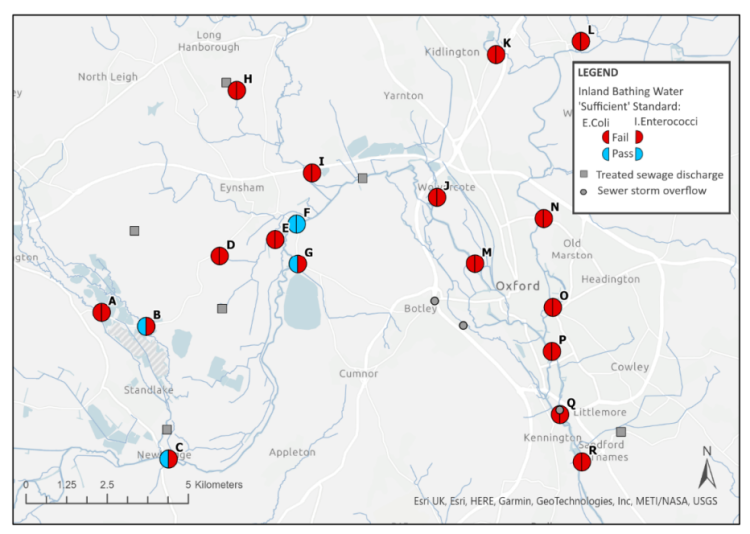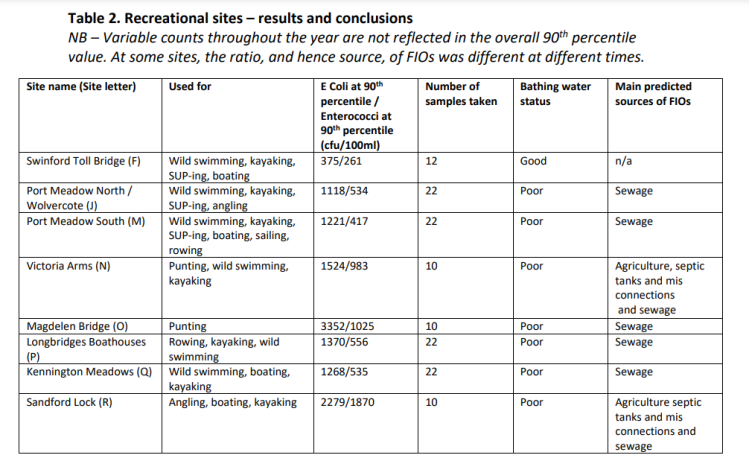We’re pleased and proud to be able to finally publish the results of 12 months of river water quality sampling and testing throughout 2021. It can be read here.
The study sampled 18 river locations in and around Oxford, including 8 spots popular with swimming, canoeing, punting and rowing, for E Coli and Enterococci. These two bacteria are “faecal indicators” (found in the poo of warm blooded animals… including humans), and are used worldwide as indicators of disease risk from surface waters.
The results are pretty sobering. Only one of the 8 recreational locations would be considered safe for swimming under current standards. The other sites had bacteria concentrations on average 1.5 – 3 times the safe level. From the ratios of the two bacterial species, it is thought that sewage is the main source of this pollution, although agricultural pollution was implicated in some cases.
Ten sites on smaller upstream tributaries were also sampled. None met the level considered sufficient for bathing, although levels varied widely, from being close to the safe level (Upper Thames & Windrush catchments), to being seven times the safe level (Limb Brook and Evenlode catchments).
The research was funded and delivered a team of scientists, map-makers, report writers and river experts from Oxford City Council, Thames Water and The Rivers Trust and Thames21. We’d like to thank all the partners, funders, reviewers and especially our dedicated citizen scientists, who collected over 150 river water samples for analysis.
Below is a map and table of the headline results:




Here is a press release from Thames21 and The Rivers Trust on these results: